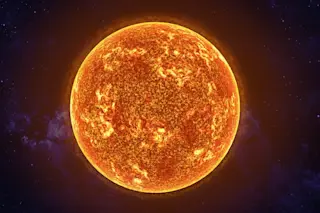As Comet ISON has moved into the field of view of NASA's SOHO spacecraft, the sun has let loose a coronal mass ejection, or CME. Click on the image for a short animation. (Source: NASA) |Update 1:15 p.m. MST, 11/27: Karl Battams of the Comet Ison Observing Campaign is reporting that the comet is brightening in line with other sungrazing comets. Writing in his latest update, Battams says, "We cannot comment on whether the nucleus is intact or not, but our analyses indicate that its rate of brightening is directly in line with that we have experienced with other sungrazing comets. This has no implication on its chances of survival." So, will Comet Ison survive it's passage through the sun's million degree corona tomorrow? Stay tuned... | Here comes Comet ISON, streaking toward the sun at more than a hundred thousand miles per hour — and now visible for the ...
ISON Update: The Comet Streaks Toward the Sun, Which Promptly Lets Loose With a Coronal Explosion
Watch as Comet ISON brightening captures NASA's SOHO, amidst a powerful CME from the sun. Will it survive this cosmic event?
More on Discover
Stay Curious
SubscribeTo The Magazine
Save up to 40% off the cover price when you subscribe to Discover magazine.
Subscribe













